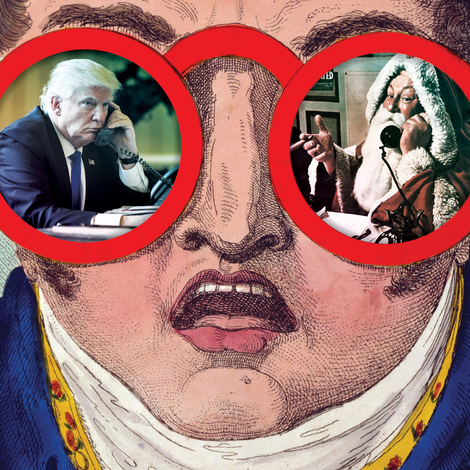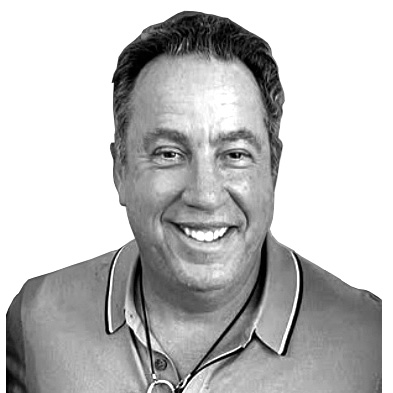On a quiet Santa Monica street, a mile from the Pacific Ocean, sits a 7,800-square-foot Spanish-style home, valued at $12.7 million. For the last few years, the sole occupant of this seven-bed, nine-bath house was a twentysomething former professional padel player named Mariano.
Mariano was employed by the renter of the home, an investor we’ll call Jimmy. The Santa Monica pad existed mainly as the ultimate clubhouse, a place where Jimmy and a dozen or so regulars could indulge their obsession with padel. How obsessed? Jimmy spent somewhere in the region of $75,000 to install a professional-grade court at a house he leased for $40,000 a month but never lived in.
Invented in Acapulco in 1969 by Enrique Corcuera, padel (pronounced pah-DEL or PA-del or paddle, depending on whom you’re asking) is typically played in doubles—two players per team—on an enclosed square slightly smaller than a tennis court. The four glass walls surrounding the court are in play, often making for long, exciting rallies. If squash, tennis, and that sad vestige of the 80s, racquetball, had a baby outdoors, it would look like padel.

In Los Angeles, where one-upmanship is as predictable as 350 days of annual sunshine, padel is the caviar of racket sports. From Miami to Malibu, from the eastern tip of Long Island to Palm Desert, courts are cropping up pretty much anywhere there is enough land, and cash, to build. Padel offers a better workout than pickleball, and its subtleties are harder to learn, which affords a certain status that appeals to the monied jock.
The games at Jimmy’s house were also an opportunity for participants to gamble. And not for small stakes. Matches there could be played for as much as $50,000 a set—scoring is the same as tennis—with the amateur typically being paired with a pro who would receive 10 to 20 percent of any winnings.
A few miles northeast of Jimmy’s, Michael Scott, a real-estate investor who made much of his fortune in trailer parks, installed a padel court in the backyard of his two-acre Beverly Park home. A group of two dozen regulars—producers, screenwriters—on a coveted invitation list compete there several afternoons a week.
Private tournaments have been cropping up. On a recent weekend, 64 players—a mix of professionals and weekend warriors—competed in the L.A. Padel Invitational. It was played on several private courts in lush garden settings in and around Beverly Hills, and the entry fee was reportedly a few thousand dollars. As teams advanced through rounds, they won prize money. Food and drink were provided. And, no, this is not happening on the local pickleball scene.
Across Los Angeles, more and more padel courts are popping up, including a public spot called Padel Up atop the Westfield mall in the heart of Century City.

“We see all different levels,” says Abraham Alvarez, the head pro at Padel Up. “I can’t tell you how many collegiate-level tennis players come here and expect to just blast away. The first thing I have to do is massage their egos. Tennis players have to rewire their brains and learn that the walls are their friends.”
The sport’s growth has been rapid. In 2019, there were just 20 courts in the U.S. As of 2024, there were 454, according to the United States Padel Association. They estimate there will be more than 30,000 courts by 2030. In Miami, many professionals from Argentina, Venezuela, and Spain now live and compete on a growing padel circuit.
In Europe, where padel has been popular for decades, courts are more plentiful. According to the International Padel Federation, there are more than 30 million men and women who play in more than 90 countries, many of whom compete on public courts. That’s about twice as many as those who play pickleball, which remains mostly an American game.
While pricey private courts are certainly in vogue, padel is not just a sport for the 0.1 percent. Reserve, a padel club with three locations in Miami and one in New York’s Hudson Yards, charges anywhere from $500 to $1,000 to join, which allows members to book court times, take lessons, and enjoy a post-match cold plunge or sauna.

Skeptics may wonder if this is all just a passing fad. “Padel is not some elitist sport,” says Steve Crosby, who plays four or five times a week in Los Angeles. “It may be hard to find a public court now, but that’s all changing. Padel is here to stay.”
The pandemic was an accelerator for pickleball, which is much easier to learn—anyone who grew up playing Ping-Pong or tennis can pick it up quickly. Will the same happen with padel, which has a slightly steeper learning curve? “It’s the most addictive sport I’ve ever played,” says Chris King, a former paddle-tennis player who switched. “It’s the most fun you can have with a racket in your hand.”
As for that private court in Santa Monica? It’s already gone. Jimmy moved to Aspen and canceled his lease, and the owner immediately demolished the court. As word spread, a flurry of texts with photos of the devastation went out to the regulars. A few of the disheartened stopped by the home and took selfies. Some openly wept.
David T. Friendly is an Academy Award–nominated film-and-television producer and a former journalist


